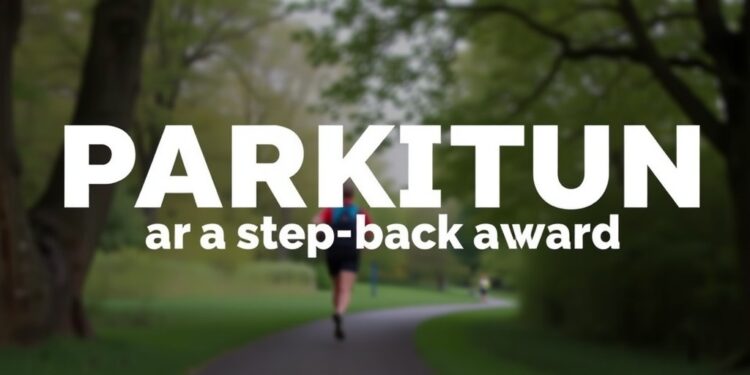In recent years, a growing number of general practitioners have begun to advocate for an unconventional form of prescription: parkrun. This initiative is part of a broader movement towards social prescribing, which seeks to promote preventative healthcare strategies among patients. Parkrun organizes weekly 5-kilometer events that cater to a diverse audience, including those who walk, jog, or run. These events not only take place in parks but also on beaches and trails around the world, primarily originating from the UK. With approximately 200,000 participants each week, parkrun has gained momentum as a community-driven health initiative.
Despite the apparent benefits of parkrun, Dr. Margaret McCartney recently raised significant concerns about the implications of turning this beloved activity into a “prescription.” Writing in The BMJ, she argues that framing parkrun as a medical intervention risks medicalizing what should be an enjoyable and accessible leisure activity. McCartney’s critique challenges the essence of exercise as we envision it: a source of joy, community, and personal achievement rather than a chore dictated by health professionals.
Dr. McCartney highlights the underlying cultural messages embedded in this approach. Her argument suggests that prescribing exercise equates physical activities with substances that can be deemed dangerous—essentially placing exercise within the same realm as medication. This perspective raises profound questions about societal perceptions of physical activity and whether it should ever be treated as a prescription. The implications of this shift could lead to a more compliance-driven attitude toward movement, rather than fostering an organic, joyful connection to physical well-being.
McCartney acknowledges the positive impact of parkrun but stresses that medicalizing the experience detracts from its fundamental appeal. Prescribing parkrun might diminish individual freedoms and the organic spirit of community engagement that fosters group exercise. McCartney’s insights inject a level of caution into the conversation about integrating physical activity into the healthcare system, urging stakeholders to reflect on key principles such as patient autonomy and the promotion of social resources within the community.
Moreover, the statistics regarding parkrun participation warrant consideration. According to research highlighted by McCartney, an alarming 43% of individuals who register for parkrun do not actually participate. Additionally, 22% of participants attend only once, revealing the challenges of maintaining engagement among those who may benefit from such activities. Individuals who classify themselves as physically inactive are even less likely to return, underscoring the need for inclusive and adaptable formats that resonate with a diverse array of community members.
One dimension of this discussion revolves around the potential for commercial interests to exploit the parkrun initiative. McCartney raises concerns that endorsing a prescription model may attract the attention of corporate sponsors, who seek to commercialize health initiatives for profit. This brings forth questions about the integrity of parkrun as a community resource and whether the essence of the experience could be compromised in the face of financial incentivization.
Dr. McCartney continues to support parkrun and regularly attends events, viewing the field as an essential aspect of her wellness routine. However, her cautions regarding partnerships and potential corporate influence resonate profoundly. By emphasizing the risks associated with medicalization and external profit-driven motives, she seeks to ensure that resources and opportunities for healthy living remain firmly rooted in community ownership rather than becoming medical commodities.
The ideas presented by McCartney highlight a broader movement within the healthcare community that advocates for a more holistic approach to wellness. The concept of social prescribing has gained traction as healthcare systems look for strategies to improve overall health, reduce loneliness, and enhance wellbeing. Nevertheless, the challenge remains: how can these strategies be implemented without sacrificing the essence of community engagement, autonomy, and enjoyment?
As public health initiatives continue to evolve, the dialogue surrounding social prescribing and community-based exercise needs to be inclusive, dynamic, and responsive to the needs of various populations. It’s imperative that health professionals and community organizers collaborate to create environments where physical activity is seen not as a prescription but as a vital, enjoyable part of everyday life.
If we genuinely aspire to foster a culture of health and wellbeing, it will require ongoing discussion, research, and innovation to nurture approaches that resonate with community values and individual choices. A future where parkrun and similar initiatives flourish will hinge on our collective ability to balance medical interventions and the intrinsic joy of movement.
In conclusion, as the debate around parkrun as a prescription unfolds, it is essential to keep the conversation vibrant and centered around community engagement. The potential benefits of physical activity underscore the need for an accessible and enjoyable approach to health, free from the constraints of medical prescriptions. By emphasizing autonomy and the communal spirit of parkrun, we can work towards a future that truly prioritizes health in a more holistic and joyful way.
Subject of Research:
Article Title:
News Publication Date:
Web References:
References:
Image Credits:
Keywords:




